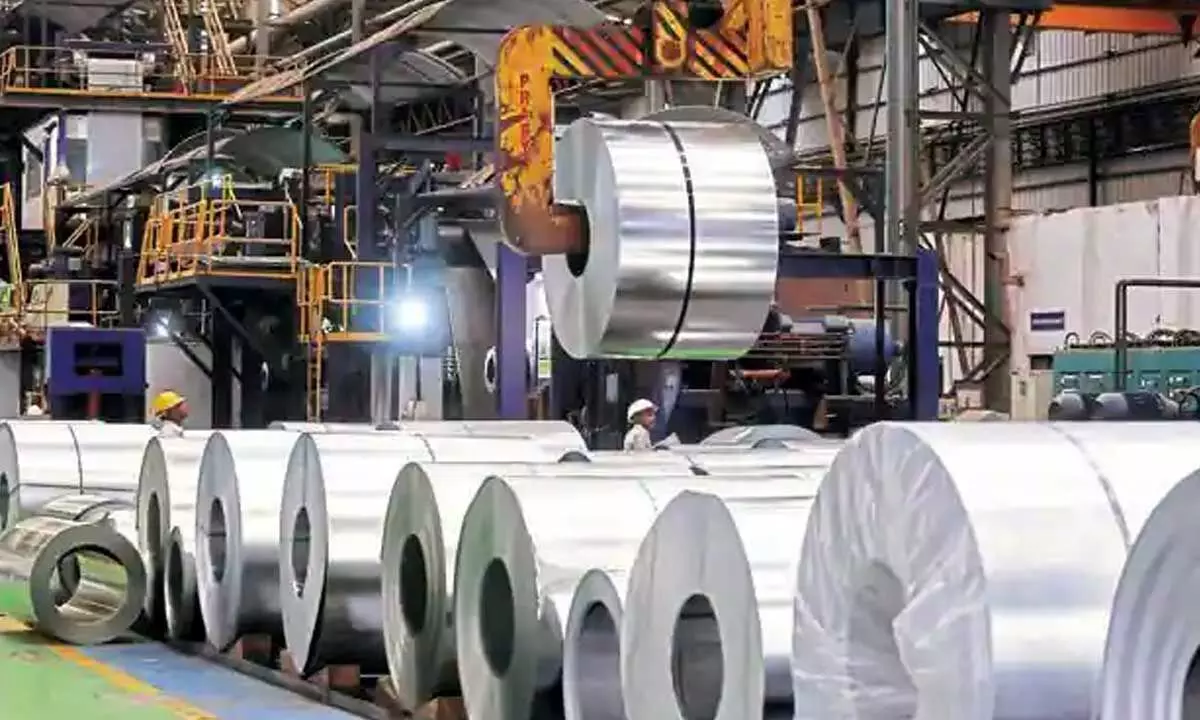Efforts on to make India a major steel producer
India’s finished steel exports had dropped nearly 50 per cent year-on-year in the first half of this fiscal to 3.6 million tonne, and for the first time since fiscal 2019, the country became a net steel importer between July and August.
image for illustrative purpose

India's finished steel exports had dropped nearly 50 per cent year-on-year in the first half of this fiscal to 3.6 million tonne, and for the first time since fiscal 2019, the country became a net steel importer between July and August. Therefore, the government needed to address the issue and do something immediately. And rising to the occasion, the Centre, last week, decided to withdraw export duty on steel products and raw materials. The decision was taken also in the wake of a significantly subdued global demand. At present also, the world demand outlook is weak given recessionary headwinds. This is reflected in global steel prices, which are 5-7 per cent lower than domestic prices. Between February and April - before the imposition of duty - the export premium was 2-3 per cent. Exports have thus become less remunerative except for strategically regaining market share in geographies like Middle East and Europe.
The Union government has taken another decision almost the same time. The government also increased import duty on coking coal - a key raw material for steel production - to 2.5 per cent from nil earlier. Mind you that the global coking coal prices have corrected nearly 45 per cent between April and September.
Let us now consider some of the possible impacts of these two decisions. Going by the latest Crisil study on the sector, the government decision to withdraw export duty on steel products and raw materials will improve sector sentiment.
However, may not materially increase the near-term earnings of domestic primary steel manufacturers because of subdued global demand. But of course in the long run, the move should improve export competitiveness of the additional capacities being set up. And Pellet manufacturers, in particular, are expected to benefit from increased export opportunities. That's because, domestic prices are at a steep 35-40 per cent discount to current global prices of $120-125 per tonne. While this incentivises exports, doing so would have a bearing on domestic primary steel producers as their input prices would rise. This, coupled with some inventory destocking through exports, could increase domestic steel prices by Rs500-1,000 per tonne in the near term, Crisil experts feel.
And now coming to the impacts of the increased import duty on coking coal, the expected increase in domestic steel prices after the duty increase, most likely, will not lead to earnings gain for primary steel producers.
But their operating margin should rebound in the second half of this fiscal after moderating close to 14-15 per cent in the first half, mainly on the back of lower production cost.
All these will have to be seen in light of the fact that the domestic steel demand is expected to grow at a healthy 5-6 per cent compound annual growth rate through fiscal 2027 and the increased capacity would mainly cater to this increased domestic demand. The improved export competitiveness will bolster utilisation and operating profitability of the steel makers.
At the end of the day, all these moves aim at making India a steel producer of scale, and positioning domestic producers as globally competitive ones.
How far India succeeds in translating its dream into action-only time will tell. But it's a steely ambition, for sure.

